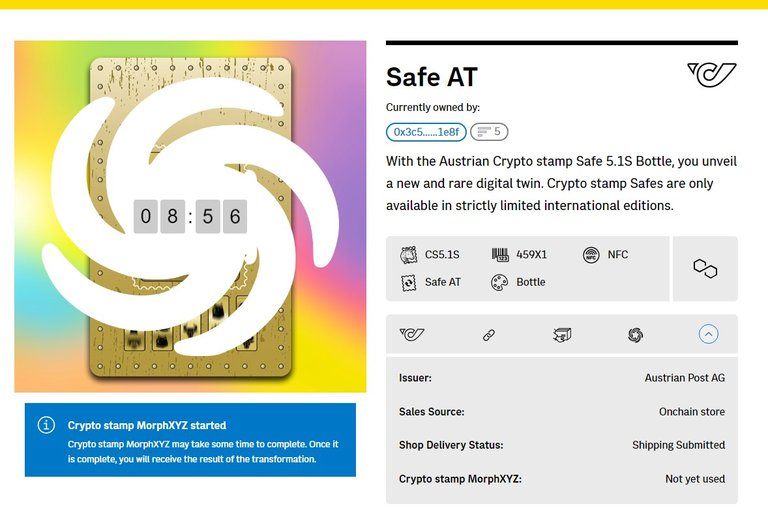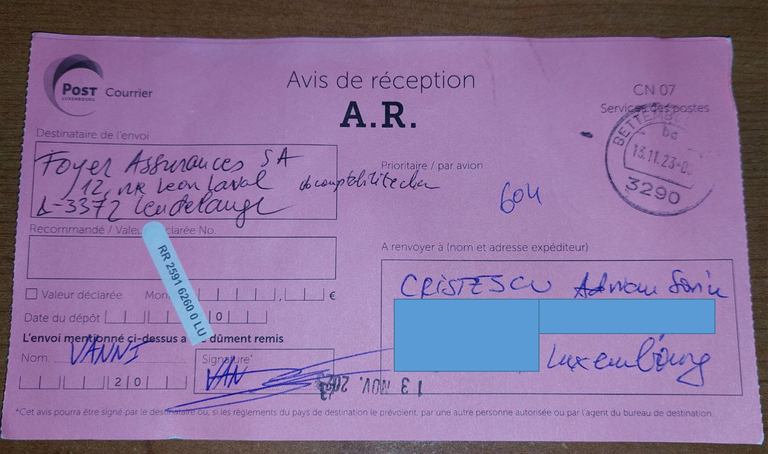This is a follow-up article to my previous exploration of the Cryptostamps. To the best of my knowledge, this is the first time that a reputable traditional institution, a fixture of our daily lives, the Post Office, is retailing to the mass market a crypto product using a public, permissionless blockchain.
Take a moment for that to sink in, because it's a huge step to adoption.
One of the most trusted institutions in our societies is selling to "mom and pop" a crypto asset which lives not on a fake private blockchain that is controlled by big corporates, but on Polygon (I went and bought more MATIC, but NFA!)

This time I went further along two different axes:
- I wanted to explore the history of the crypto assets related to the stamps since the Austrian post issued the first one back in 2019
- I also wanted to understand better how strong was the link between the physical stamp and the NFT
The games we play with NFTs
As I discovered last time, the crypto lions jointly issued by the Austrian, Dutch and Luxembourg Post offices were the edition 5.1 - the first to which Luxembourg Post participated. They were preceded by the crypto bears (edition 5.0) and by the crypto bulls (edition 4.0) to which only the Austrians and the Dutch had participated. Before the bulls, the first three editions were only issued by the Austrian Post.
I went to the online shop cryptostamp.com and noticed there were still bulls (4.0) and bears (5.0) available. As I said in my previous article, I had bought the lions in a post office, in physical form, but learned that it can also be done in reverse. So I acquired a crypto bull (edition 4.0) and paid for it in crypto, on chain.

I imagine that the Austrian Post has a contract with a small company that sells the MATIC they collect on a crypto exchange and then transfers the euros to the Post. You can see that the price is quoted in MATIC.

Next thing I found out was that in addition to the "crypto animals", the Austrian and the Dutch had also issued "complementary NFTs" called "cryptosafe". There are 3 different families:
- rainbow
- bottles
- pacifiers
At the time I discovered them, all "rainbow" cryptosafes were sold out, so I bought a bottle and a pacifier, again using MATIC on chain, which is not very smart investment-wise, but it was for the sake of experimentation.

Here is what my "wallet" looked like on cryptostamp.com (note that on Polygonscan or in my Phantom wallet the images do not resolve).

I then went and requested physical delivery of the 3 stamps (the bull and the two "safes") to my home address. This has the inconvenience that it breaks privacy, but I did it for experimentation purposes. I'm eagerly awaiting the physical stamps to be delivered, although they are Austrian postal stamps and have no currency here in Luxembourg (mere physical collectibles for me).
Now the pacifier and the bottle are too generic to be of any particular value. The idea is to use them to mint new NFTs by combining one "crypto safe" with a "crypto animal" in a process dubbed "MorphXYZ".

Because I wanted to have more choice when "morphing" I opened a third crypto lion, hoping to get a grey one (they are the most frequent, almost 40 000 out of a total of 75000). And indeed my third stamp was connected with a grey NFT (which are called "black" in the wallet, for some reason).

From the cryptostamp.com wallet again, here is a closer look to the "bottle" ...

... and the "pacifier"

At first I toyed with the idea of morphing a very common grey lion with the pacifier in order to obtain a somewhat less common "morphed" NFT.

But then I thought better, as the crypto animal is not touched and the "added value" accrues to the "cryptosafe". So as the "bottles" seemed more in demand (slightly scarcer) than the "pacifiers", I decided to combine my "legendary" red lion with the bottle.

Once the transaction is validated the minting takes about ten minutes.

As you can see, the "bottle" has disapeared from my collection, replaced by a cute red baby lion. Note that I've tried and I cannot combine the red lion again (with the pacifier for instance).
Nor can I combine the yellow crypto bull with the pacifier because the latter is edition 5.1 and incompatible with the 4.0 bull.

The separate lives of the "twins"
On the other hand, I wanted to see how strong is the link between the physical stamp and its "digital twin".
I first went and listed the green lion NFT on OpenSea, as you can see further down. It was by the way the first time I had ventured on the "open sea" ...
Then I had to post a registered letter to my insurer, so I wrote the letter, put in an enveloppe and stuck the green crypto lion on it, as you can see in the picture below:

The postman accepted my letter and since the normal cost was 8,1€ and the face value of the lion is 9€, he even gave me 0,9€ change, which is the ultimate proof that stamps behave like "private money" of the Post office which backs their value and accepts to redeem them.
A physical stamp is considered "spent" and loses its value once the letter or package has been delivered. So I waited for the "reception receipt" to come back to me. And back it came.

Once it came, I went to check back on OpenSea. As the NFT images are privately managed, I had half-expected that the Post marks on the "digital twin" the fact that the physical stamp had been used, or "spent". Typically, by replacing the green lion image with something saying "the physical stamp to which this NFT is linked is no longer valid" or something like that.
But as you can see below, it doesn't seem to be the case: the twins seem to have been separated and live their own separate lives. The physical stamp might have made someone at "Foyer Assurances" happy or at least a little curious. Yet the NFT is not aware of the travels of its physical twin.

That basically means that when acquiring the physical cryptostamps, the NFTs are thrown in more or less for free (if we set aside the relatively low utility of 9€ physical stamps).
Given that there are no visible identifiers on the physical stamp, what were your thoughts on how POST would identify its digital twin?
I think they should have inserted the NFC chip in the stamp, not in the cardboard support.
Or, if that was too bulky, a simple magnetic strip with the identifier would have been the cheap and easy solution.
Or even more "low tech", a small QR code on the face of the stamp ...
With no identification means on the stamp itself, once stuck on an envelope it is forever detached from the digital twin ...
Post manually reviewed. 😊
Thank you for letting us know about crypto stamps
I’d make my research too before thinking of buying any
Always DYOR! :-)
Yay! 🤗
Your content has been boosted with Ecency Points
Use Ecency daily to boost your growth on platform!
Support Ecency
Vote for new Proposal
Delegate HP and earn more, by @sorin.cristescu.
Looks really cool. I didn't use my stamps yet, I'm looking forward to testing them.
Crypto is really expanding and making wave massively
Remarkably so indeed!